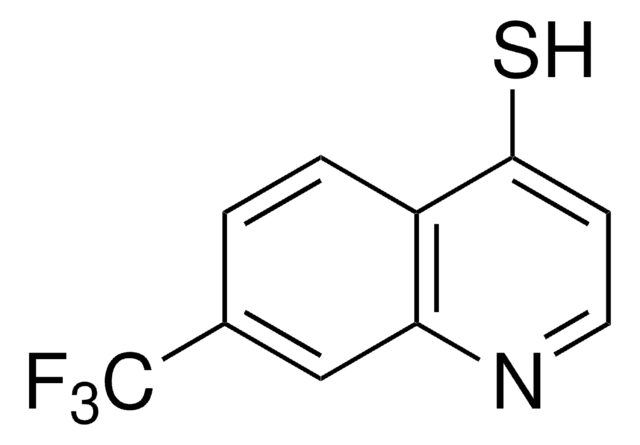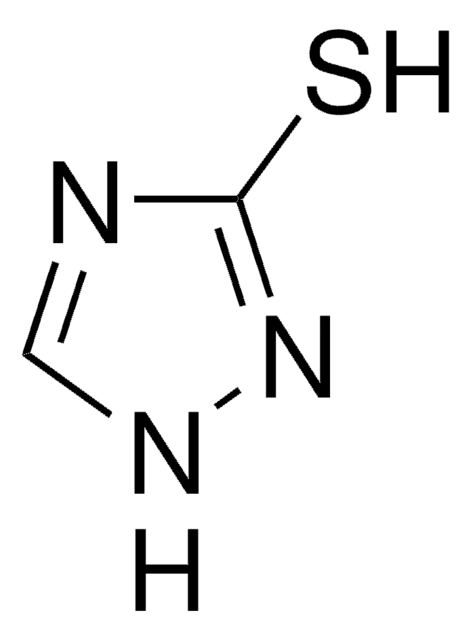All Photos(3)
About This Item
Empirical Formula (Hill Notation):
C9H7NS
CAS Number:
Molecular Weight:
161.22
EC Number:
MDL number:
UNSPSC Code:
12352100
PubChem Substance ID:
NACRES:
NA.22
Recommended Products
Assay
97%
mp
174-176 °C (lit.)
SMILES string
Sc1ccc2ccccc2n1
InChI
1S/C9H7NS/c11-9-6-5-7-3-1-2-4-8(7)10-9/h1-6H,(H,10,11)
InChI key
KXZSVYHFYHTNBI-UHFFFAOYSA-N
General description
2-Quinolinethiol has been used to study the electrochemical behavior of 2-Quinolinethiol using a hanging mercury drop electrode.
Signal Word
Warning
Hazard Statements
Precautionary Statements
Hazard Classifications
Eye Irrit. 2 - Skin Irrit. 2 - STOT SE 3
Target Organs
Respiratory system
Storage Class Code
11 - Combustible Solids
WGK
WGK 3
Flash Point(F)
Not applicable
Flash Point(C)
Not applicable
Personal Protective Equipment
dust mask type N95 (US), Eyeshields, Gloves
Choose from one of the most recent versions:
Certificates of Analysis (COA)
Lot/Batch Number
Don't see the Right Version?
If you require a particular version, you can look up a specific certificate by the Lot or Batch number.
Already Own This Product?
Find documentation for the products that you have recently purchased in the Document Library.
Electrochemical behavior of 2?and 8?quinolinethiol on a hanging mercury drop electrode.
Paneli MG and Voulgaropoulos AN.
Electroanalysis, 7(3), 292-294 (1995)
A Maillet et al.
Cell death & disease, 4, e653-e653 (2013-06-08)
Engagement of the mitochondrial-death amplification pathway is an essential component in chemotherapeutic execution of cancer cells. Therefore, identification of mitochondria-targeting agents has become an attractive avenue for novel drug discovery. Here, we report the anticancer activity of a novel Osmium-based
Homan Kang et al.
Scientific reports, 5, 10144-10144 (2015-05-29)
Recently, preparation and screening of compound libraries remain one of the most challenging tasks in drug discovery, biomarker detection, and biomolecular profiling processes. So far, several distinct encoding/decoding methods such as chemical encoding, graphical encoding, and optical encoding have been
Our team of scientists has experience in all areas of research including Life Science, Material Science, Chemical Synthesis, Chromatography, Analytical and many others.
Contact Technical Service









